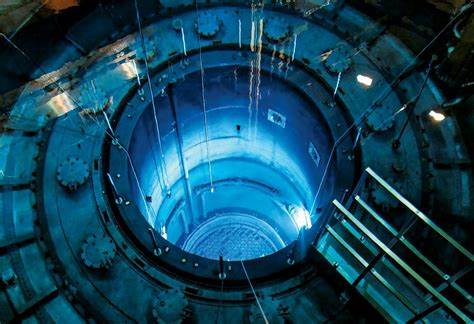
As the world seeks sustainable and efficient energy solutions, nuclear power continues to be at the forefront of discussions. Traditional nuclear reactors have paved the way, but ongoing research and development have given rise to innovative designs such as High-Temperature Gas-Cooled Reactors (HTGRs), Molten Salt Reactors (MSRs), and Fast Breeder Reactors (FBRs). In this article, we delve into the unique features, advantages, and challenges of each of these cutting-edge nuclear technologies.
- High-Temperature Gas-Cooled Reactors (HTGRs)
High-Temperature Gas-Cooled Reactors (HTGRs) represent a modern approach to nuclear energy production. These reactors utilize helium as a coolant, allowing for significantly higher operating temperatures compared to conventional water-cooled reactors. One key feature of HTGRs is the use of graphite as a moderator and fuel element, providing enhanced safety features.
Advantages:
a. Safety: The inherent design of HTGRs ensures passive safety features, minimizing the risk of core meltdowns.
b. Efficiency: High operating temperatures enable efficient electricity generation and open avenues for various industrial applications.
c. Flexibility: HTGRs can be adapted for both electricity generation and high-temperature industrial processes like hydrogen production.
Challenges:
a. Cost: The initial construction costs of HTGRs may be higher than traditional reactors, requiring further advancements for cost-effective deployment.
b. Limited Operational Experience: The technology is still in the early stages of deployment, and gaining operational experience is crucial for widespread acceptance.
- Molten Salt Reactors (MSRs)
Molten Salt Reactors (MSRs) present a paradigm shift in nuclear reactor design by using liquid fluoride or chloride salts as both the fuel and the coolant. The fluid nature of the fuel allows for better temperature control and passive safety mechanisms.
Advantages:
a. Inherent Safety: MSRs exhibit inherent safety features, as the fuel salt expands with temperature increases, leading to negative feedback and self-regulation.
b. Reduced Nuclear Waste: MSRs can potentially reduce the volume and longevity of nuclear waste compared to traditional reactors.
c. Versatility: MSRs can be designed for various purposes, including electricity generation, desalination, and even the production of medical isotopes.
Challenges:
a. Materials Compatibility: The corrosive nature of molten salts poses challenges for finding materials that can withstand long-term exposure.
b. Developmental Stage: MSRs are still in the experimental phase, and significant research and development are required before widespread deployment.
- Fast Breeder Reactors (FBRs)
Fast Breeder Reactors (FBRs) represent an advanced nuclear technology designed to produce more fissile material than it consumes. FBRs use fast neutrons, allowing for the breeding of fissile material such as plutonium.
Advantages:
a. Efficient Fuel Utilization: FBRs can utilize alternative fuels, making them highly efficient in terms of resource utilization.
b. Plutonium Production: FBRs play a crucial role in producing plutonium for fuel, contributing to the closed fuel cycle.
c. Reduced Long-Term Radioactive Waste: FBRs have the potential to reduce the long-term radioactivity of nuclear waste.
Challenges:
a. Proliferation Concerns: The production of plutonium raises concerns about nuclear proliferation and the potential use of fissile material in weapons.
b. Complex Design: FBRs are technologically complex, requiring advanced materials and precise engineering, which may pose challenges in terms of cost and deployment.
Conclusion
High-Temperature Gas-Cooled Reactors, Molten Salt Reactors, and Fast Breeder Reactors represent promising advancements in nuclear technology. While each technology comes with its unique set of advantages and challenges, they collectively contribute to the ongoing efforts to make nuclear energy safer, more efficient, and environmentally friendly. As research and development continue, these innovative reactors hold the potential to play a crucial role in meeting the world’s growing energy demands while minimizing the environmental impact associated with traditional nuclear power.





